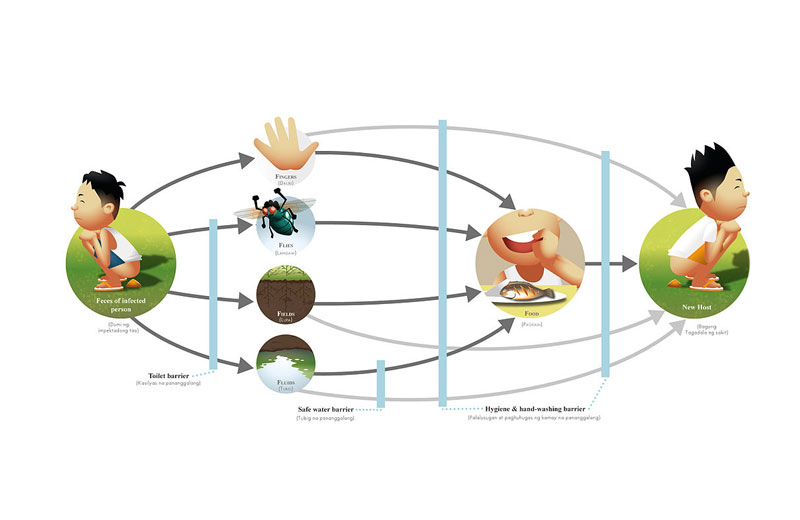Sounds like a status message in Facebook. But that should pretty much sum up the relationship between WASH strategies and nutrition outcomes. Obviously, when there is unsafe water, pitiable and inadequate sanitation conditions with woeful hygiene practices, it will inadvertently lead to public health implications. This is especially critical, when we talk about the imminent health hazards, in overtly crowded and densely populated spaces filled with undernourished urban poor population with low economic background.
The reason and outcome of poverty itself are mutually exclusive for undernourishment in the urban poor populations. In addition to that, undernourished people with poor health are obviously more prone and vulnerable to WASH related infections, such as fecally transmitted infections including but not limited to diarrhea, environmental enteropathy, nematode infections and other intestinal infections.
There is an active, nasty cycle of WASH related infections and undernutrition. For instance, an under nourished person who is recently infected by diarrhea due to poor WASH practices, will have lower stamina and strength left in his/her body, as their capacity to absorb nutrients will have reduced on their way to recovery. So in the context of the urban poor, the nutrients absorption rate or the capacity of the undernourished person to take advantage of the nutrient / calories intake is significantly reduced. With poor immunity, under nutrition and lack of access to good healthcare, they will be more susceptible to subsequent infections, and the cycle continues, adding to their cup of woes.
The impact of poor sanitation practices and the resulting diarrheal infections, on under nourished children is much worse. It has been proven to cause growth stunting (low height-for-age), wasting (low weight-for-height), and underweight (low weight-for-age), and even child deaths. The micronutrients deficiency (in terms of Vitamin A, B12, Riboflavin, Folic acid, Iron and Zinc) that is evident among children and also women, exacerbates their vulnerability to WASH related infections. I don’t want to sound like an emissary of Doomsday. But the other associated fallouts that dampen the functioning of the system besides malnutrition, stunting in children, premature deaths, are wasted time and loss of productivity.
So in order to achieve a universal and sustainable outcome, it is imperative that we start to think on the lines of linking and establishing synergies between WASH plans and policies with nutrition strategies. We need to work towards demonstrating and bringing in WASH interventions by coalescing with nutrition programmes.
The key priorities would be to reduce the high malnutrition rate, to address the micronutrient deficiency, improve quality, coverage and access to water, sanitation and hygiene services and practice, adopting nutrition sensitive sanitation and holistic WASH related interventions, to improve the overall health of the populations and well, the betterment of humanity. Pretty lofty and ambitious one might say. Easier said than done, right! But in this so called post-truth and self-awareness era, as the popular saying goes, to making it count, if we do our bit to instill a systematic progressive change in our midst then we just might make a positive difference in the world.
References used:
http://riceinstitute.org/wordpress/wp-content/uploads/downloads/2013/04/rice-sanitation-stunting-brief.pdf (accessed on Mar 28, 2017)
http://thousanddays.org/wp-content/uploads/The-Impact-of-Poor-Sanitation-on-Nutrition-1.pdf (accessed on Mar 28, 2017)
https://www.unicef.org/media/files/IntegratingWASHandNut_WHO_UNICEF_USAID_Nov2015.pdf (accessed on Mar 28, 2017)

Suneethi Sundar
Specialist, TNUSSP


Leave A Comment
You must be logged in to post a comment.